Yuuna Hoshi
Toward Active Robot-Assisted Feeding with a General-Purpose Mobile Manipulator: Design, Evaluation, and Lessons Learned
Apr 07, 2019
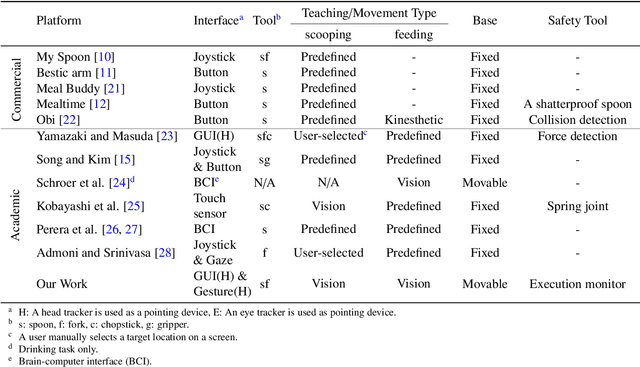
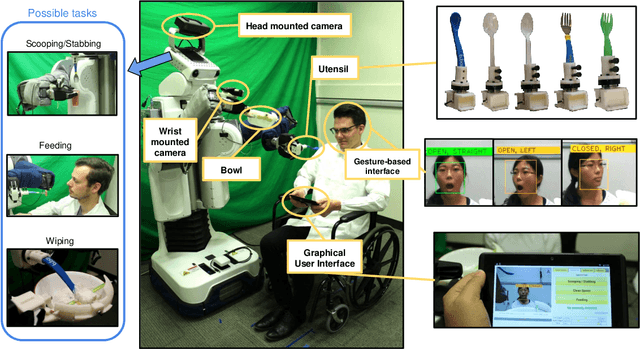

Abstract:Eating is an essential activity of daily living (ADL) for staying healthy and living at home independently. Although numerous assistive devices have been introduced, many people with disabilities are still restricted from independent eating due to the devices' physical or perceptual limitations. In this work, we introduce a new meal-assistance system using a general-purpose mobile manipulator, a Willow Garage PR2, which has the potential to serve as a versatile form of assistive technology. Our active feeding framework enables the robot to autonomously deliver food to the user's mouth. In detail, our web-based user interface, visually-guided behaviors, and safety tools allow people with severe motor impairments to benefit from the robotic assistance. We evaluated our system with 10 able-bodied participants and 9 people with motor impairments. Both groups of participants successfully ate various foods using the system and reported high rates of success for the system's autonomous behaviors in a laboratory environment. Then, we performed in-home evaluation with Henry Evans, a person with quadriplegia, at his house in California, USA. In general, Henry and the other people who operated the system reported that it was comfortable, safe, and easy-to-use. We discuss learned lessons and design insights through user evaluations.
A Multimodal Anomaly Detector for Robot-Assisted Feeding Using an LSTM-based Variational Autoencoder
Nov 02, 2017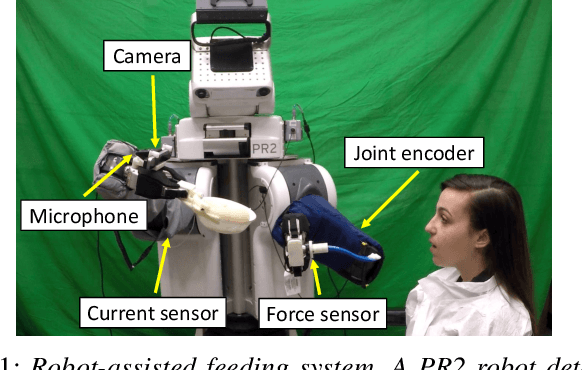
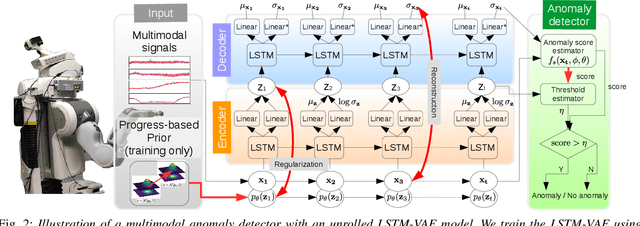
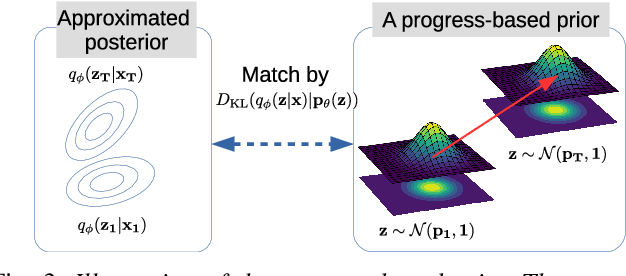
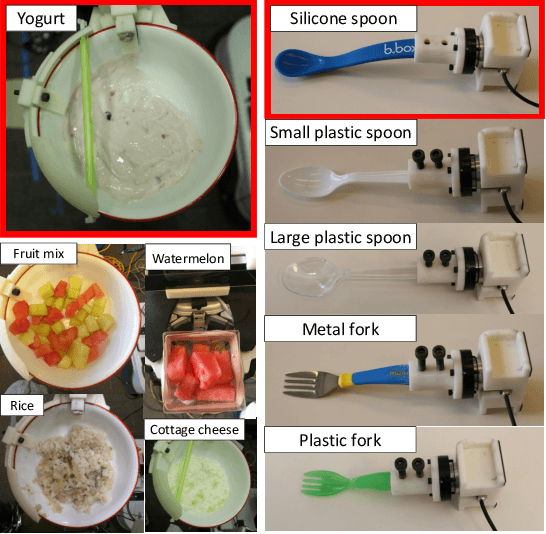
Abstract:The detection of anomalous executions is valuable for reducing potential hazards in assistive manipulation. Multimodal sensory signals can be helpful for detecting a wide range of anomalies. However, the fusion of high-dimensional and heterogeneous modalities is a challenging problem. We introduce a long short-term memory based variational autoencoder (LSTM-VAE) that fuses signals and reconstructs their expected distribution. We also introduce an LSTM-VAE-based detector using a reconstruction-based anomaly score and a state-based threshold. For evaluations with 1,555 robot-assisted feeding executions including 12 representative types of anomalies, our detector had a higher area under the receiver operating characteristic curve (AUC) of 0.8710 than 5 other baseline detectors from the literature. We also show the multimodal fusion through the LSTM-VAE is effective by comparing our detector with 17 raw sensory signals versus 4 hand-engineered features.
 Add to Chrome
Add to Chrome Add to Firefox
Add to Firefox Add to Edge
Add to Edge